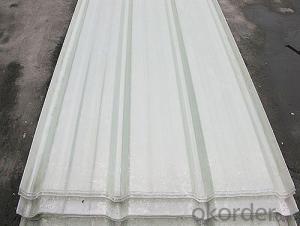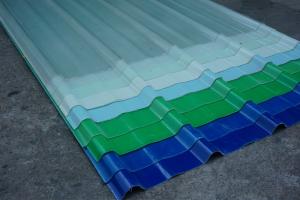FRP Pultruded Flooring Panel made in China
- Loading Port:
- Shanghai
- Payment Terms:
- TT OR LC
- Min Order Qty:
- 0 m²
- Supply Capability:
- 0 m²/month
OKorder Service Pledge
OKorder Financial Service
You Might Also Like
Description of FRP Pultruded Flooring Panel
FRP flooring panel is a big size profile which is made by pultrusion technology and in holistic shape, it could form a continuours close plane by unique self-lock structure, which could be uesed as load sructures in various corrosion environments and could replace wood plate, aluminum plate or steel plate etc.
The product could add natural color grit on the surface, which is safe for the anti-slippery, besides it could obtain the natural appearance and no fadding for a long time.
Main Features of FRP Pultruded Flooring Panel
Anti-corrosion non-rusty
Light weight and high strength
Anti-flammable
Anti-fatigue
Safe and anti-slippery
Anti-ageing
Easy to installation and maintenance
Excellent electromagnetism property
Specifications of FRP Pultruded Flooring Panel
Product code :60040, Product width: 600mm, Product height: 40mm
Face plate thickness:5mm, Ventral plate thickness:4mm Product weight: 12kg/m
Applications of FRP Pultruded Flooring Panel
Deck of cooling tower, plate of scaffold, floor of chip manufacturing, deck of bridge, rooftop, slope of architectural overhaul, structural floor, floor of light railcar, baffle of equipment, roof of cover, trench cover, footpath, weather plank.
IMages of FRP Pultruded Flooring Panel
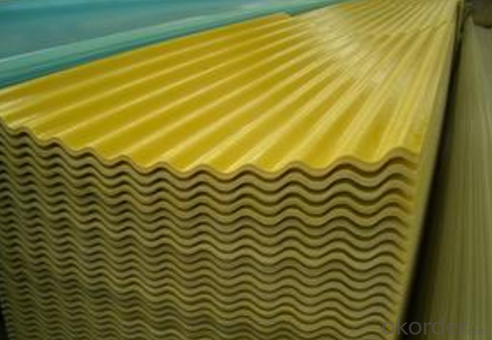
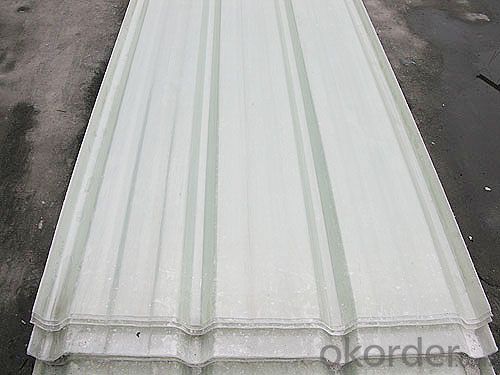
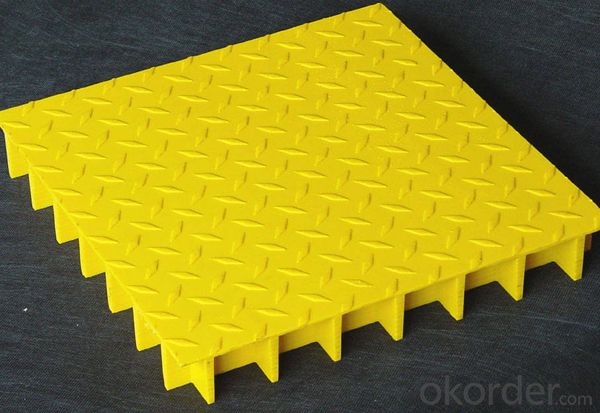
FAQ
1. How about the documents after shipment?
After shipment, we ll send all original documents to you by DHL, including Packing List.Commercial Invoice, B/L, and other certificates as required by clients.
2. How long is the delivery time?
Usually it takes 10-25days after receipt of the deposits or L/C, and it also depends on the quantity of your order.
3. How's the payment?
Telegraphic Transfer(T/T) or Letter of Credit(L/C)
4. Do You Arrange Shipment?
Yes, dear esteemed customers, for FOB or CIF price, we will arrange shipment for you. For EXW price, clients need to arrange shipment by themselves or their agents.
5. How is the package?
Usually, we arrange the standard out-package for exporting.
- Q:Can FRP pultrusion profiles be used in the construction of railway sleepers?
- The use of FRP (Fiber Reinforced Polymer) pultrusion profiles is indeed possible in the construction of railway sleepers. These profiles possess a range of advantages that render them suitable for this particular application. To begin with, the lightweight yet robust nature of FRP pultrusion profiles makes them an ideal option for railway sleepers. They boast high strength-to-weight ratios, enabling them to withstand heavy loads and reliably support the weight of trains. Moreover, their lightweight constitution facilitates transportation and installation, thereby reducing construction time and costs. Additionally, FRP pultrusion profiles exhibit a high resistance to corrosion, a crucial aspect for railway sleepers. Unlike traditional materials such as wood or steel that are prone to corrosion when exposed to moisture and chemicals, FRP profiles are non-corrosive. Consequently, they do not necessitate regular maintenance or replacement due to rust or decay. Furthermore, these profiles offer exceptional durability and longevity. They can withstand UV radiation, extreme temperatures, and chemicals, ensuring a longer lifespan compared to conventional materials. As a result, the need for frequent replacements is minimized, leading to reduced maintenance and lifecycle costs. Moreover, FRP pultrusion profiles can be tailored to meet specific design requirements. They can be manufactured in various shapes and sizes to accommodate different railway sleeper designs, providing flexibility in construction. Additionally, they can be produced in different colors, allowing for aesthetic customization. Lastly, FRP pultrusion profiles possess excellent electrical insulation properties, a critical factor for railway sleepers. They are capable of providing insulation between the train tracks and the ground, preventing electrical interference and ensuring safe operation. In conclusion, FRP pultrusion profiles are a suitable choice for constructing railway sleepers due to their lightweight yet strong composition, corrosion resistance, durability, customization options, and electrical insulation properties.
- Q:Are FRP pultrusion profiles resistant to chemicals used in chemical plants?
- Yes, FRP (Fiber Reinforced Polymer) pultrusion profiles are highly resistant to the chemicals typically used in chemical plants. The combination of reinforced fibers and a polymer matrix in FRP profiles provides excellent resistance to a wide range of corrosive substances, making them an ideal choice for chemical plant applications.
- Q:Are FRP pultrusion profiles resistant to moisture absorption?
- FRP pultrusion profiles possess remarkable resistance to moisture absorption, primarily due to the composition of the materials used in their construction. These profiles typically consist of a combination of fiberglass and resin, wherein fiberglass is naturally non-porous and impervious to moisture, while the resin is specifically designed to repel moisture. The moisture resistance of FRP profiles is further enhanced by the pultrusion manufacturing process. This process involves pulling the fiberglass and resin through a heated die, ensuring thorough impregnation of the fibers with resin and creating a dense and solid structure. Consequently, the resulting product exhibits exceptional resistance to water penetration and moisture absorption. Additionally, the moisture resistance of FRP pultrusion profiles can be augmented through the application of protective coatings or surface treatments, such as gel coats or UV-resistant finishes. These coatings provide an extra layer of defense against moisture ingress. The superior moisture resistance of FRP pultrusion profiles makes them an ideal choice for applications that involve exposure to water or high humidity, such as marine environments, wastewater treatment plants, or outdoor structures. By preventing issues like rot, rust, or degradation commonly associated with materials like wood or metal, these profiles offer a reliable and durable solution that can endure moisture exposure without compromising their structural integrity or performance.
- Q:Are FRP pultrusion profiles resistant to termites or other pests?
- Yes, FRP (Fiber Reinforced Polymer) pultrusion profiles are highly resistant to termites and other pests. The composition of FRP, which includes resin and glass fibers, makes it an inhospitable material for pests. Unlike wood, FRP does not provide a food source or favorable conditions for termites or other pests to thrive. Therefore, FRP pultrusion profiles are an excellent choice for applications where resistance to pests is required.
- Q:Are pultruded FRP sections strong? What are its main areas of application?
- The tensile strength of products produced by pultrusion process is higher than that of ordinary steel.Widely used in transportation, electrical, electrical, electrical insulation, chemical, mining, marine, watercraft, corrosive environment and life, civil areas.
- Q:Can FRP pultrusion profiles be used in the construction of shipping containers?
- Yes, FRP (Fiber Reinforced Polymer) pultrusion profiles can be used in the construction of shipping containers. FRP pultrusion profiles offer several advantages that make them suitable for this application. Firstly, FRP pultrusion profiles are extremely strong and durable. They have a high strength-to-weight ratio, which allows for the construction of lightweight shipping containers that can withstand heavy loads and harsh environmental conditions. This is particularly beneficial in the shipping industry, where containers are subjected to rough handling and extreme weather during transportation. Secondly, FRP pultrusion profiles are resistant to corrosion, which is a major concern in the shipping industry due to the exposure to saltwater and other corrosive substances. Unlike traditional materials like steel, FRP does not rust or corrode, ensuring a longer lifespan for the shipping containers. Additionally, FRP pultrusion profiles have excellent thermal insulation properties. This helps in maintaining a consistent temperature within the shipping containers, which is crucial for transporting temperature-sensitive goods such as food, pharmaceuticals, and chemicals. Moreover, FRP pultrusion profiles can be easily customized and fabricated into various shapes and sizes, allowing for design flexibility in the construction of shipping containers. They can be molded to specific dimensions and incorporate features such as reinforcements, fastening points, and integrated insulation. Furthermore, FRP pultrusion profiles are non-conductive and have low thermal conductivity. This makes them an ideal choice for shipping containers that transport sensitive electronic equipment or hazardous materials, as they reduce the risk of electrical and thermal accidents. In conclusion, FRP pultrusion profiles can indeed be used in the construction of shipping containers. Their strength, durability, corrosion resistance, thermal insulation properties, design flexibility, and non-conductive nature make them a reliable and practical choice for this application.
- Q:Can FRP pultrusion profiles be used in the construction of wind turbine blades?
- Indeed, FRP pultrusion profiles have the capability to be utilized in the construction of wind turbine blades. There are several advantages offered by FRP pultrusion profiles that render them suitable for this purpose. To begin with, FRP pultrusion profiles possess a lightweight yet robust nature, a crucial characteristic for wind turbine blades since they must endure the aerodynamic forces exerted by the wind. The high strength-to-weight ratio of FRP pultrusion profiles permits the creation of longer and more effective blades. Moreover, FRP pultrusion profiles exhibit exceptional corrosion resistance properties, a vital attribute for wind turbines that are exposed to harsh weather conditions. In contrast to traditional materials like steel, FRP does not corrode, thereby ensuring an extended service life for the wind turbine blades. Additionally, FRP pultrusion profiles are customizable to satisfy specific design requirements. This flexibility allows for the optimization of blade performance by tailoring the shape, thickness, and stiffness of the profiles to maximize energy capture and minimize fatigue. Furthermore, FRP pultrusion profiles possess good fatigue resistance, enabling them to endure repeated loading cycles without experiencing significant performance degradation. This is particularly crucial for wind turbine blades, which encounter cyclic loading due to wind gusts and changes in wind direction. Lastly, FRP pultrusion profiles are electrically non-conductive, a beneficial trait for wind turbine blades as it eliminates the risk of electrical discharge during operation. In conclusion, the lightweight, strong, corrosion-resistant, and customizable nature of FRP pultrusion profiles makes them an outstanding choice for the construction of wind turbine blades. This contributes to the advancement of more efficient and durable wind energy systems.
- Q:Can FRP pultrusion profiles be used in high-voltage applications?
- Yes, FRP pultrusion profiles can be used in high-voltage applications. FRP (Fiber Reinforced Polymer) is a highly durable and electrically insulating material, making it suitable for use in high-voltage environments. The pultrusion process used to manufacture FRP profiles ensures that the material has a consistent and uniform composition, resulting in excellent electrical insulation properties. FRP pultrusion profiles have a high dielectric strength, meaning they can withstand high voltages without electrical breakdown. They also exhibit low electrical conductivity, preventing the flow of electric current through the material. This makes FRP profiles an ideal choice for applications where electrical insulation is crucial, such as high-voltage power transmission and distribution systems, electrical substations, and electrical equipment insulation. In addition to their electrical insulation properties, FRP pultrusion profiles offer several other advantages in high-voltage applications. They are lightweight, corrosion resistant, and have a high strength-to-weight ratio, making them easy to handle, install, and maintain. FRP profiles are also non-magnetic and non-conductive, reducing the risk of electromagnetic interference (EMI) in sensitive electrical systems. Overall, FRP pultrusion profiles are a reliable and efficient choice for high-voltage applications, providing excellent electrical insulation, durability, and performance in challenging environments.
- Q:Can FRP pultrusion profiles be used in the construction of wind turbine blades?
- Indeed, FRP pultrusion profiles have the capability to be utilized in the construction of wind turbine blades. There are several advantages offered by FRP pultrusion profiles that render them suitable for this purpose. To begin with, FRP pultrusion profiles possess a lightweight yet robust nature, a crucial characteristic for wind turbine blades since they must endure the aerodynamic forces exerted by the wind. The high strength-to-weight ratio of FRP pultrusion profiles permits the creation of longer and more effective blades. Moreover, FRP pultrusion profiles exhibit exceptional corrosion resistance properties, a vital attribute for wind turbines that are exposed to harsh weather conditions. In contrast to traditional materials like steel, FRP does not corrode, thereby ensuring an extended service life for the wind turbine blades. Additionally, FRP pultrusion profiles are customizable to satisfy specific design requirements. This flexibility allows for the optimization of blade performance by tailoring the shape, thickness, and stiffness of the profiles to maximize energy capture and minimize fatigue. Furthermore, FRP pultrusion profiles possess good fatigue resistance, enabling them to endure repeated loading cycles without experiencing significant performance degradation. This is particularly crucial for wind turbine blades, which encounter cyclic loading due to wind gusts and changes in wind direction. Lastly, FRP pultrusion profiles are electrically non-conductive, a beneficial trait for wind turbine blades as it eliminates the risk of electrical discharge during operation. In conclusion, the lightweight, strong, corrosion-resistant, and customizable nature of FRP pultrusion profiles makes them an outstanding choice for the construction of wind turbine blades. This contributes to the advancement of more efficient and durable wind energy systems.
- Q:Can FRP pultrusion profiles be used in the aerospace and aviation industry?
- Indeed, the aerospace and aviation industry can utilize FRP pultrusion profiles. These profiles offer an exceptional ratio of strength to weight, corrosion resistance, and flexibility in design, making them suitable for a wide range of applications in this field. A primary advantage of FRP pultrusion profiles is their ability to provide high structural integrity while maintaining a low weight. This is crucial in aerospace and aviation, where reducing weight is a top priority. By being lightweight, FRP profiles can contribute to fuel efficiency, improved performance, and increased payload capacity. Moreover, FRP pultrusion profiles display excellent resistance to corrosion, including chemicals, moisture, and UV radiation. This makes them highly suitable for use in aircraft and aerospace systems that often face harsh environmental conditions. Unlike traditional metallic materials, FRP profiles can withstand corrosive agents and maintain their structural integrity for extended periods. This reduces maintenance needs and enhances the durability of aircraft components. Additionally, the design flexibility of FRP pultrusion profiles allows engineers to create complex shapes and geometries, enabling customization to meet specific requirements. This design versatility opens up opportunities for innovative solutions in aerospace and aviation applications, such as structural components, aircraft interiors, radomes, fairings, and more. It is important to note that FRP pultrusion profiles have already been successfully employed in the aerospace and aviation industry for various applications, including wing spars, stabilizers, galleys, interior panels, and cargo containers. Their proven track record demonstrates their reliability and performance in demanding environments. In conclusion, FRP pultrusion profiles are highly suitable for use in the aerospace and aviation industry due to their high strength-to-weight ratio, corrosion resistance, and design flexibility. Their utilization can contribute to lighter, more efficient, and durable aircraft components, making them a viable choice for various applications in this sector.
1. Manufacturer Overview |
|
|---|---|
| Location | |
| Year Established | |
| Annual Output Value | |
| Main Markets | |
| Company Certifications | |
2. Manufacturer Certificates |
|
|---|---|
| a) Certification Name | |
| Range | |
| Reference | |
| Validity Period | |
3. Manufacturer Capability |
|
|---|---|
| a)Trade Capacity | |
| Nearest Port | |
| Export Percentage | |
| No.of Employees in Trade Department | |
| Language Spoken: | |
| b)Factory Information | |
| Factory Size: | |
| No. of Production Lines | |
| Contract Manufacturing | |
| Product Price Range | |
Send your message to us
FRP Pultruded Flooring Panel made in China
- Loading Port:
- Shanghai
- Payment Terms:
- TT OR LC
- Min Order Qty:
- 0 m²
- Supply Capability:
- 0 m²/month
OKorder Service Pledge
OKorder Financial Service
Similar products
New products
Hot products
Related keywords


